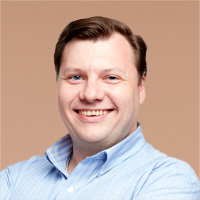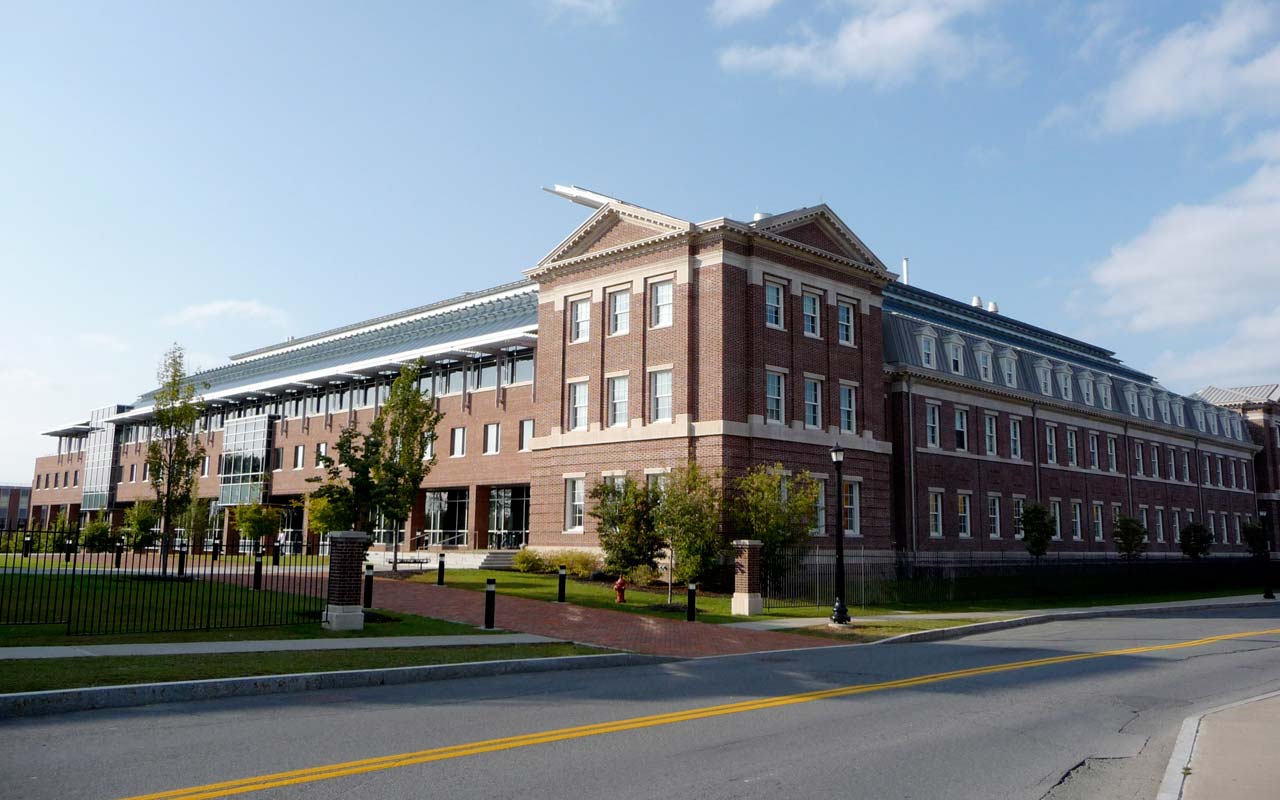10 Great Colleges Where Alumni Earn the Most Money
As the cost of college continues its upward trajectory, the question for many high school students and their cost-conscious parents is not only where to get the best college education but also which schools’ alums land the highest-paying jobs.


As the cost of college continues its upward trajectory, the question for many high school students and their cost-conscious parents is not only where to get the best college education but also which schools’ alums land the highest-paying jobs. Earning a bigger paycheck obviously gives you a leg up on career earnings, but it also offers the means to pay off college loans faster.
For a glimpse of what your child's payday may look like a decade after attending college, we've added a new column to our ranking of the 300 best college values. The figures, which show the median earnings of workers who started at a particular college 10 years earlier and who received federal financial aid, come from the U.S. Department of Education. The data don't distinguish whether the workers graduated from college or went on to graduate school. The federal data also do not reflect salary differences between studying, say, English rather than engineering. In fact, a student’s field of study—assuming he or she pursues a career in that field—often means more for future earnings than the school name embossed on the degree (see our list of the 10 Best College Majors for Your Career). Still, the information offers a way to gauge earnings outcomes at various schools.
The following 10 colleges' former students earn the most among our best-value schools. The schools on this list tend to specialize in academic programs in science, technology, mathematics and finance--fields of study that continue to offer more financially lucrative jobs. Eight of the 10 colleges are private universities, and two are liberal arts colleges. All but three appear in the top 50 of our overall rankings. Take a look.

1. Massachusetts Institute of Technology
- Location: Cambridge, Mass.
- Undergraduate enrollment: 4,512
- Total annual cost: $61,434
- Average need-based aid: $37,090
- Average graduating debt: $19,064
- SEE ALSO: SLIDE SHOW: 10 Best College Values, 2016
Average earnings after 10 years: $91,600
Founded in 1861 to educate students in science and technology, MIT is a school whose reputation is burnished by its exceptional grads. For example, 85 Nobel Laureates and 56 National Medal of Science winners grace its alumni list. Among the school's 46 undergraduate majors, the most popular degrees during the 2013-14 academic year were in engineering, at 35%, followed by computer and information sciences (22%) and mathematics and statistics (10%).

2. Harvard University
- Location: Cambridge, Mass.
- Undergraduate enrollment: 6,636
- Total annual cost: $61,659
- Average need-based aid: $44,430
- Average graduating debt: $15,117
Average earnings after 10 years: $87,200
The country's oldest and, arguably, most prestigious college is also one of the most competitive schools on our list, with an admission rate of only 6%. What's more, 85% of students who are offered admission enroll. Harvard provides evidence that bigger paychecks aren’t always related to earning a degree in a technical field: One-third of the undergraduate degrees conferred to Harvard's graduating students during the 2012-13 academic year were in social sciences, followed by biological/life sciences (15%) and history (9%).

3. Georgetown University
- Location: Washington, D.C.
- Undergraduate enrollment: 7,595
- Total annual cost: $64,385
- Average need-based aid: $36,878
- Average graduating debt: $22,464
- SEE ALSO: SLIDE SHOW: 10 Best Colleges With the Lowest Average Graduating Debt
Average earnings after 10 years: $83,300
From world leaders (Bill Clinton is an alum) to business executives and thought leaders, Georgetown has graduated a long list of influential "global citizens" over its 226-year history. Like Harvard, Georgetown conferred one-third of its bachelor degrees in social sciences during the 2013-14 academic year, followed by 23% in business/marketing and 7% in health professions.

4. Stevens Institute of Technology
- Location: Hoboken, N.J.
- Undergraduate enrollment: 2,892
- Total annual cost: $61,690
- Average need-based aid: $13,308
- Average graduating debt: $26,722
Average earnings after 10 years: $82,800
If you've never heard of tiny Stevens, you're not alone. The private, 145-year-old university, perched along the Hudson River with a view of the New York City skyline, provides a student-centric, entrepreneurial environment with the goal of using technology to "confront global challenges," according to the school's Web site. Health care, energy, finance, defense, STEM education and coastal sustainability are some of the research programs students can pursue—leading to jobs in industries that tend to have generous pay.

5. Rensselaer Polytechnic Institute
- Location: Troy, N.Y.
- Undergraduate enrollment: 5,618
- Total annual cost: $66,172
- Average need-based aid: $28,527
- Average graduating debt: $41,814
- SEE ALSO: SLIDE SHOW: 10 Best Values in Public Colleges, 2016
Average earnings after 10 years: $81,700
Just a stone's throw north of Albany, N.Y., RPI is the nation's oldest technological research university, offering degrees in such fields as engineering, science, architecture, information technology and Web science. It is also recognized for the transfer of technology from lab to marketplace, which helps explain how its alums are landing lucrative tech jobs.

6. Stanford University
- Location: Stanford, Calif.
- Undergraduate enrollment: 7,019
- Total annual cost: $61,852
- Average need-based aid: $41,620
- Average graduating debt: $19,230
Average earnings after 10 years: $80,900
Only 5% of applicants get into this prestigious California research university, the most competitive school in our rankings. Stanford's current community of professors and fellows includes 21 Nobel laureates. Of the bachelor's degrees the university awarded during the 2014-15 academic year, 19% were in both interdisciplinary studies (from neurosciences to Native American studies) and engineering, 14% were in social sciences, and 13% were in computer and information sciences. Stanford's computer science majors, in particular, land lucrative starting salaries as tech firms such as Google, Intel and LinkedIn in neighboring Silicon Valley snap up the university’s grads with annual pay that often tops $100,000, according to PayScale.

7. Harvey Mudd College
- Location: Claremont, Calif.
- Undergraduate enrollment: 804
- Total annual cost: $68,055
- Average need-based aid: $35,637
- Average graduating debt: $24,503
- SEE ALSO: SLIDE SHOW: 10 Best College Majors for a Lucrative Career
Average earnings after 10 years: $78,600
Among liberal arts colleges, Harvey Mudd tops the list for earnings 10 years out. Some 30% of this tiny Pacific Coast college’s students earned bachelor's degrees in computer and information sciences during the 2014-15 academic year. The next-most popular fields were engineering, at 29% of degrees, and interdisciplinary studies, at 15%.

8. University of Pennsylvania
- Location: Philadelphia
- Undergraduate enrollment: 9,746
- Total annual cost: $64,776
- Avg. need-based aid: $40,044
- Average graduating debt: $19,442
Average earnings after 10 years: $78,200
Business/marketing is the top major for undergraduates at Philly’s 275-year-old Ivy, accounting for 21% of bachelor's degrees among graduates in the 2013-14 academic year. Other popular fields of study are the social sciences, at 16% of degrees, and health studies, at 10%. Penn is also one of the most affordable schools on our list, with generous need-based aid that knocks the annual sticker price down by 62%, on average, for students who qualify.

9. Washington and Lee University
- Location: Lexington, Va.
- Undergraduate enrollment: 1,890
- Total annual cost: $59,202
- Avg. need-based aid: $41,472
- Average graduating debt: $23,224
- SEE ALSO: SLIDE SHOW: 10 Worst College Majors for Your Career
Average earnings after 10 years: $77,600
The top school in our rankings garners the number nine spot for future earnings among its former students. Tradition, ethics and etiquette are important at this small, Virginia liberal arts college: Its honor code lets students proctor their own exams, and a "speaking tradition" dictates that students and faculty greet everyone they pass on campus. The generous need-based financial aid cuts the sticker price by 70%. The top three fields of study in 2013-14: social sciences, at 22% of degrees, business administration and accounting, at 20%, and biological/life sciences, at 10%.

10. Lehigh University
- Location: Bethlehem, Pa.
- Undergraduate enrollment: 5,062
- Total annual cost: $59,510
- Avg. need-based aid: $32,995
- Average graduating debt: $31,877
Average earnings after 10 years: $76,800
This quaint, wooded campus 90 minutes north of Philadelphia provides an ideal setting for fostering an entrepreneurial approach to learning: Students are encouraged by faculty to create a personalized curriculum, and students and teachers collaborate closely on research projects. Lehigh's technical bent accounts for former students' high salaries 10 years down the road. The top majors in 2013-14 were in engineering, at 28% of bachelor's degrees; business and marketing, also at 28%; and biological and life sciences, at 7%.
Get Kiplinger Today newsletter — free
Profit and prosper with the best of Kiplinger's advice on investing, taxes, retirement, personal finance and much more. Delivered daily. Enter your email in the box and click Sign Me Up.

-
 Top Five Tips From Current Retirees to Future Generations
Top Five Tips From Current Retirees to Future Generations"Plastics" is no longer the wisdom passed down to the young, as in "The Graduate." These days, retirees are giving much better advice.
By Christy Bieber
-
 Three Simple Ways to Live Greener This Earth Day
Three Simple Ways to Live Greener This Earth DayEasy upgrades that help you live greener, reduce waste and reconnect with the planet.
By Choncé Maddox
-
 What to Do With Your Tax Refund: 6 Ways to Bring Growth
What to Do With Your Tax Refund: 6 Ways to Bring GrowthUse your 2024 tax refund to boost short-term or long-term financial goals by putting it in one of these six places.
By Rachael Green
-
 What Does Medicare Not Cover? Eight Things You Should Know
What Does Medicare Not Cover? Eight Things You Should KnowHealthy Living on a Budget Medicare Part A and Part B leave gaps in your healthcare coverage. But Medicare Advantage has problems, too.
By Donna LeValley
-
 15 Reasons You'll Regret an RV in Retirement
15 Reasons You'll Regret an RV in RetirementMaking Your Money Last Here's why you might regret an RV in retirement. RV-savvy retirees talk about the downsides of spending retirement in a motorhome, travel trailer, fifth wheel or other recreational vehicle.
By Bob Niedt
-
 The Six Best Places to Retire in New England
The Six Best Places to Retire in New Englandplaces to live Thinking about a move to New England for retirement? Here are the best places to land for quality of life, affordability and other criteria.
By Stacy Rapacon
-
 The 10 Cheapest Countries to Visit
The 10 Cheapest Countries to VisitWe find the 10 cheapest countries to visit around the world. Forget inflation woes, and set your sights on your next vacation.
By Quincy Williamson
-
 15 Ways to Prepare Your Home for Winter
15 Ways to Prepare Your Home for Winterhome There are many ways to prepare your home for winter, which will help keep you safe and warm and save on housing and utility costs.
By Donna LeValley
-
 Six Steps to Get Lower Car Insurance Rates
Six Steps to Get Lower Car Insurance Ratesinsurance Shopping around for auto insurance may not be your idea of fun, but comparing prices for a new policy every few years — or even more often — can pay off big.
By Donna LeValley
-
 How to Increase Credit Scores — Fast
How to Increase Credit Scores — FastHow to increase credit scores quickly, starting with paying down your credit card debt.
By Lisa Gerstner
